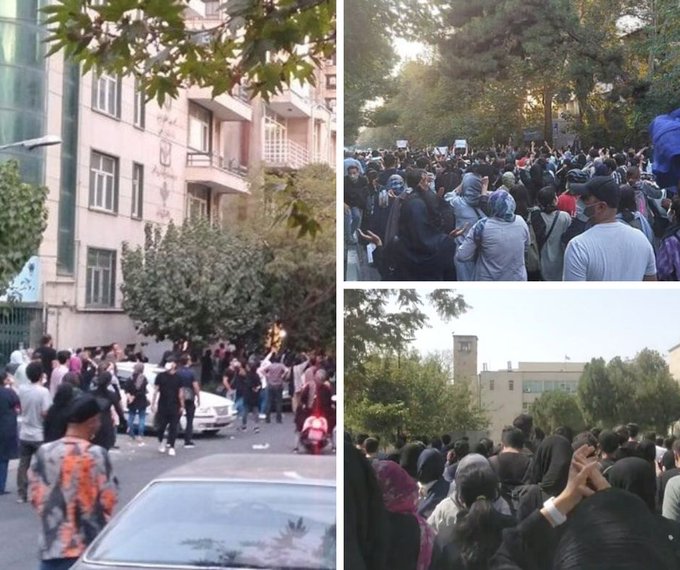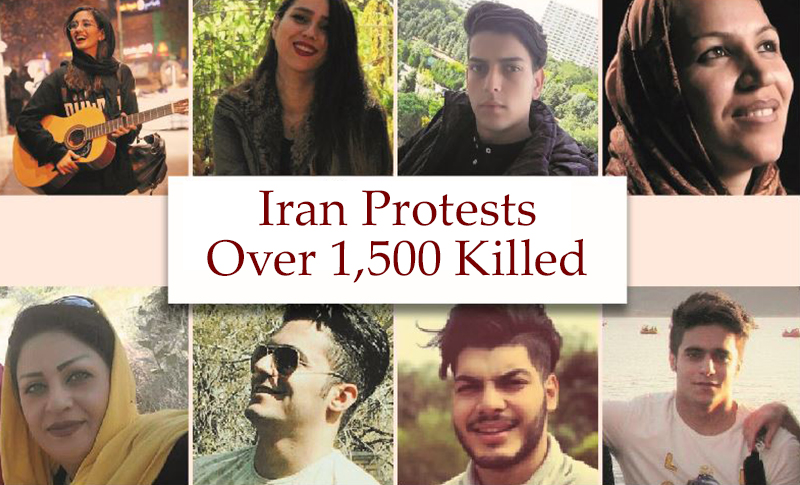

The 12th day of the Iranian uprising began on September 25. Protests were sparked by the so-called morality police of the regime’s brutal murder of Mahsa Amini on September 16. Mahsa was detained and assaulted while in custody on the grounds that she was “improperly veiled,” but the protests that followed her death included chants critical of the entire regime.
Major unrest has been occurring in Iran since 2017. However, the fundamental traits and the common factor of these protests are none other than people’s intensifying hatred toward a regime that has denied them any kind of political, social, and individual liberties for more than 40 years. Multiple intertwined socio-economic crises created an explosive society.
Despite this, the most recent uprising in Iran stands out from earlier ones, including the one in November 2019 that claimed more than 1500 lives in five days.

(NCRI) and (PMOI / MEK Iran): Reuters confirmed in a special report on December 23, 2019 about the deadly crackdown on November nationwide protests in Iran the death toll of 1500 that was announced by the People’s Mojahedin Organization of Iran (PMOI) on December 15, 2019.The security forces of the regime have allegedly killed close to 240 people in the past ten days, according to the Iranian Resistance. However, despite the regime’s harsh repression, Iran’s unrest in society has not yet been contained.
In less than a day, anti-regime protests took over a dozen cities, the entire country was engulfed in them, and calls for regime change reverberated throughout the country’s provinces. The national uprising, according to the Iranian Resistance, has so far spread to 156 cities in 31 provinces.
Over 240 persons have been slain & 12,000 arrested and detained during #IranProtests
The uprising has spread to 156 cities & cannot be contained by brutal clampdown and shutdown of the Internet. The courageous people of #Iran and esp. women will sweep away Khamenei’s dark rule. pic.twitter.com/LTxec9KaLO— Maryam Rajavi (@Maryam_Rajavi) September 27, 2022
Demographically speaking, the protesters are from various generations and are battling the security forces of the regime together. Protests are heavily dominated by women, who have been the first group of people Iran’s misogynistic leaders have targeted since 1979. Their young countrymen, who cheerily join their sisters in anti-regime demonstrations, support them.
Tehran has worked hard in recent years to create substitutes that support moderation rather than regime change. The regime’s analysts and defenders have urged the government to abolish the obligatory hijab in an effort to downplay the demands of the Iranian people since new demonstrations began in that country. But protesters have explicitly chanted: “This is the last message; the target is the entire system.” Officials from the regime have also acknowledged this fact, emphasizing that people will not be satisfied with anything less than regime change.
Supporters of the Iranian Resistance around the world continue to hold demonstrations to support #IranRevolution and tell the world about #MahsaAmini and what is happening to the people of #Iran. 1/2 pic.twitter.com/OudrfkJPKN
— NCRI-FAC (@iran_policy) September 27, 2022
The People’s Mojahedin of Iran (PMOI/MEK) organization, Iran’s main opposition group, has recently come under fire from government officials, who have highlighted the pivotal role that the group’s Resistance Units played in organizing and directing the uprising.
Additionally, state leaders, well-known politicians, and celebrities from all over the globe have expressed their unwavering support for the Iranian revolution. In other words, the appeasement strategy has suffered a severe setback as a result of the Iranian people’s uprising.
To maintain control over every square inch of the nation it has occupied, the regime will shed more blood and not refrain from brutality. As a result, more international support is needed for the Iranian people’s revolution. The onus is now on the international community to recognize Iran’s organized Resistance as the people’s representative in international matters and declare the regime to be ineffective.
Live report: Protests in 156 cities of #Iran with at least 240 killed by security forces and over 12,000 arrested#IranProtests #MahsaAmini #مهسا_امینی https://t.co/BoD9F8vzQd
— People's Mojahedin Organization of Iran (PMOI/MEK) (@Mojahedineng) September 28, 2022
 MEK Iran (follow us on Twitter and Facebook), Maryam Rajavi’s on her site, Twitter & Facebook, NCRI (Twitter & Facebook), and People’s Mojahedin Organization of Iran – MEK IRAN – YouTub
MEK Iran (follow us on Twitter and Facebook), Maryam Rajavi’s on her site, Twitter & Facebook, NCRI (Twitter & Facebook), and People’s Mojahedin Organization of Iran – MEK IRAN – YouTub







